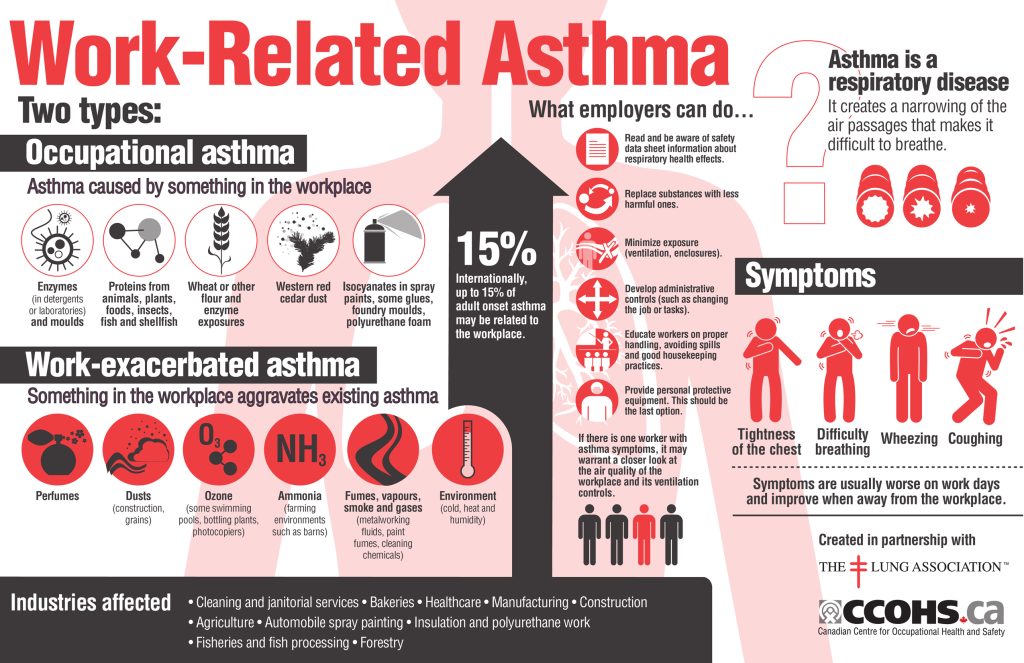
Infographics are designed to be read online, so we encourage you to share them to your online social networks and e-mail. When printing our infographics, please note that they are optimized for 11 by 17 inch paper. We also develop larger posters ideal for printing and display, based on the guidance offered in our infographics.
Description
Work-related asthma is the most common occupational respiratory disorder in industrialized countries. It creates a narrowing of the air passages that makes it difficult to breathe. Symptoms are typically worse on working days and improve when away from work.
Early and accurate diagnosis, plus changes in the workplace, can make a difference to the well-being of patients and their co-workers.
Share this infographic with information on symptoms, triggers, occupations at risk, and prevention strategies for employers, to help spread awareness of work-related asthma.
This infographic was created in partnership with the Ontario Lung Association.
Text Version
WORK-RELATED ASTHMA
Asthma is a respiratory disease
It creates a narrowing of the air passages that makes it difficult to breathe.
Work-related asthma
Two types:
- occupational asthma
- Caused by something in the workplace
Enzymes (in detergents or laboratories) and moulds
Proteins from animals, plants, foods, insects, fish and shellfish
Wheat or other flour and enzyme exposures
Isocyanates in spray paints, some glues, foundry moulds, polyurethane foam
Western red cedar dust
Work-exacerbated asthma
Something in the workplace aggravates existing asthma
Perfumes
Dusts (construction, grains)
Ozone (some swimming pools, bottling plants, photocopy machines)
Ammonia (farming environments such as barns)
Fumes, vapours, smoke and gases (metal working fluids, paint fumes, cleaning chemicals)
Environment (cold, heat and humidity)
Internationally, up to 15% of adult onset asthma may be related to the workplace.
Industries affected
Cleaning and janitorial services
Bakeries
Healthcare
Manufacturing
Construction
Agriculture
Automobile spray painting
Insulation and polyurethane work
Fisheries and fish processing
Forestry
What employers can do
Read and be aware of safety data sheet information about respiratory health effects.
Replace substances with less harmful ones.
Minimize exposure (ventilation, enclosures).
Develop administrative controls (such as changing the job or tasks).
Educate workers on proper handling, avoiding spills and good housekeeping practices.
Provide personal protective equipment. This should be the last option.
If there is one worker with asthma symptoms, it may warrant a closer look at the air quality of the workplace and its ventilation controls.
Symptoms
Tightness of the chest
Difficulty breathing
Wheezing
Coughing
Symptoms are usually worse on work days and improve when away from the workplace.
Source:

